Background
-
Exploring and developing high-speed calculation methods utilizing next-generation technologies such as
quantum computers.
-
Exploring and developing high-speed calculation methods utilizing cutting-edge technologies such as
quantum computers, in an effort to make breakthroughs in research.
Results
-
Developed a faster method for obtaining the consitent results as traditional methods using cutting-edge
technology.
-
Compressed the cycle time for implementation and verification by speeding up calculations.
-
Discovered the possibility of applying the technology to simulation of other physical phenomena.
-
Started collaborating with overseas universities based on the research results and expanded to global
research activities.
-
Provided students with the opportunity to work with cutting-edge technology, such as quantum
computers.
The research area that the Muramatsu laboratory is working on and an overview of the paper
presented this time.
Prof. MuramatsuOur research lab focuses on understanding complex phenomena in
metals, polymers, and ceramics, using solid mechanics as a foundation. We also work on developing and
advancing new Computer Aided Engineering (CAE) techniques, and integrating computation with experimentation.
Recently, we released a paper*1 in collaboration with Mr. Matsuda from Fixstars Amplify, which
utilizes Fixstars Amplify for simulating the equilibrium state of polymers.
*1 Endo, K., Matsuda,
Y., Tanaka, S. et al. A phase-field model by an Ising machine and its application to the phase-separation
structure of a diblock polymer. Sci Rep 12, 10794 (2022).
We converted the existing simulation method, the phase-field method, into a QUBO format and solved it using
the Fixstars
Amplify AE. As a result, we have gathered results that matched those obtained with traditional methods, but at
a much
faster speed (what used to take 100 minutes with conventional methods takes only 10 seconds with the Amplify
AE). We
believe that this method has the potential to be used in various fields, such as materials research in metals,
as a new,
efficient way to simulate physical phenomena.
Remarkable acceleration in obtaining the phase-separation structure with
Amplify AE
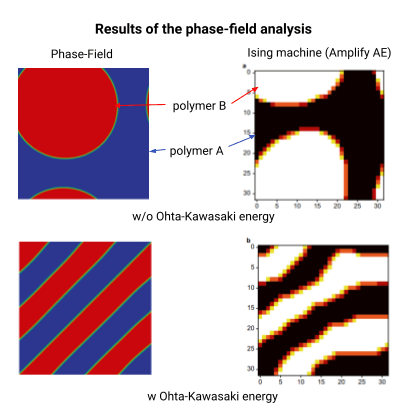
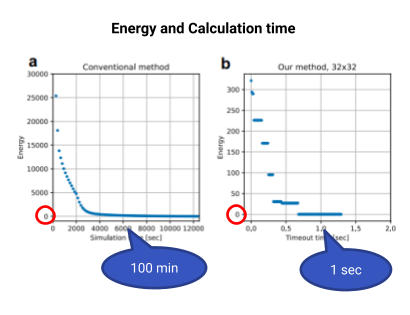
Background of the decision to undertake this research.
Prof. Muramatsu
In our field of research, we often deal with complex calculations that require a large amount of computing
power. One of
our main challenges has been to find ways to quickly perform these calculations. Using parallelized
calculations.
Nowadays parallelized calculations with supercomputers and GPUs are commonly used to faster computations.
While exploring solutions for large-scale computations, I heard Professor Yagawa, a well-known expert in
numerical simulations, mention in a lecture that utilizing next-generation technologies like quantum
computers will be crucial for future research in numerical simulations. My supervisor, Dr.
Shizawa, also had a strong interest in quantum computing.
Inspired by the thoughts of senior professors, I read and learned about quantum computers. Then I started
to ponder if
we could apply these new technologies to our materials science field.
I shared my idea of "simulating physical phenomena using annealing" with Mr. Endo, who was a doctoral
student in my lab at the time. He quickly made a prototype using a GPU machine and showed me the results.
The outcome was so intriguing that I decided to seriously pursue this line of research.
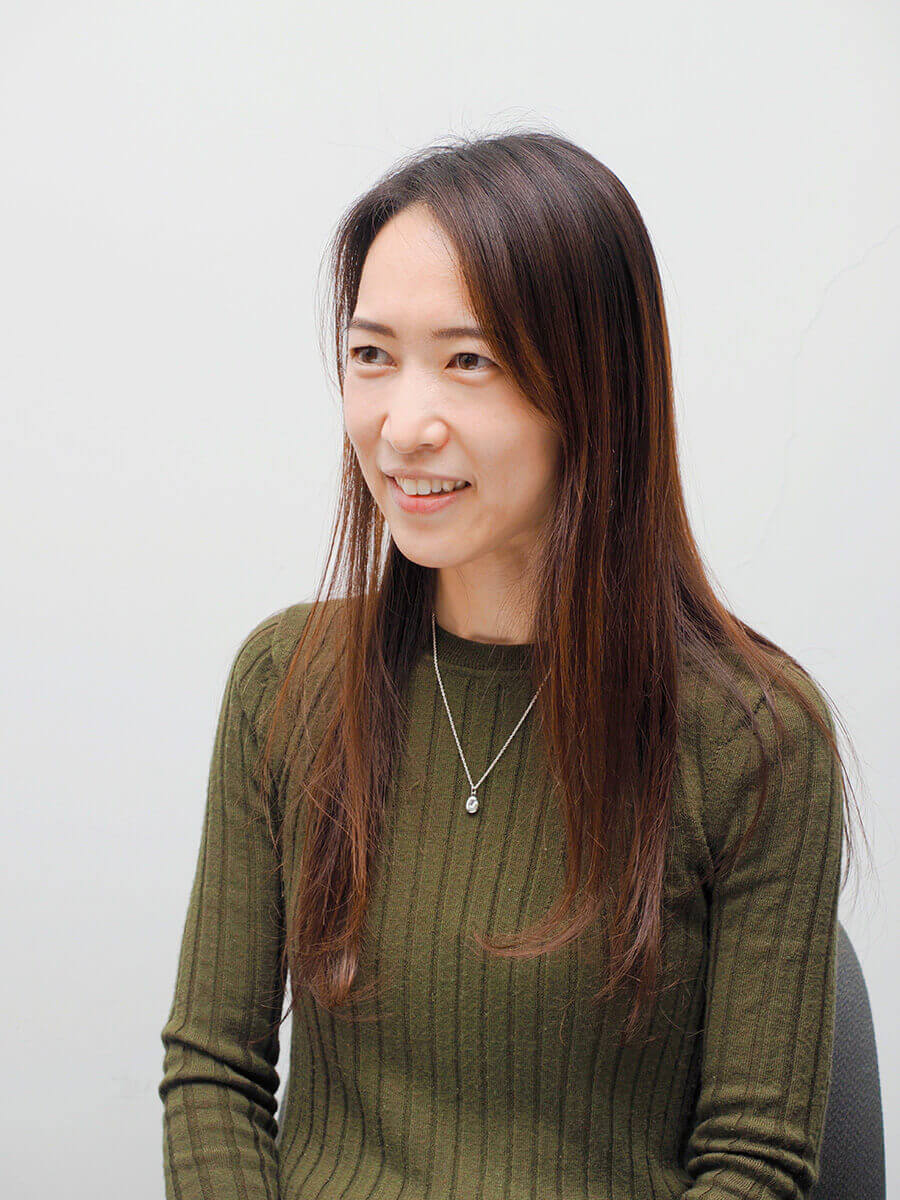 Mayu Muramatsu (Associate Professor, Department of Mechanical
Engineering, Keio University)
Mayu Muramatsu (Associate Professor, Department of Mechanical
Engineering, Keio University)
What brought you to learn about our company's Fixstars Amplify?
Prof. Muramatsu
I wanted to utilize an actual quantum annealing Ising machine in my research, so I reached out to Dr.
Tanaka*2,
Associate Professor at Keio University, who is also conducting research on quantum annealing Ising machines.
During our
consultation, Professor Tanaka introduced me to various companies and machines related to quantum computing,
including
Fixstars Amplify.
*2 Shu Tanaka, Department of Applied
Physics and Physico-informatics Faculty of Science and Technology, Keio University
Dr. Endo
I had previously worked on the IPA MITOU Program*3, where I became familiar with Fixstars Amplify
as it was utilized in the project.
*3 About IPA MITOU
Program
What made you decide to use Fixstars Amplify?
Prof. MuramatsuThere were three primary reasons.
- The computational principle of quantum annealing Ising machines was based on the laws of energy, which is
a natural phenomenon, and I found it technically convincing.
- The Amplify SDK was an integrated middleware that supported multiple quantum annealing Ising machines. It
allowed for seamless machine switching without wasting existing programs, particularly as quantum computers
became more practical in the future.
- Fixstars Amplify owned a GPU-based high-speed Ising machine (Amplify AE) that was developed in-house.
What do you think of Fixstars Amplify?
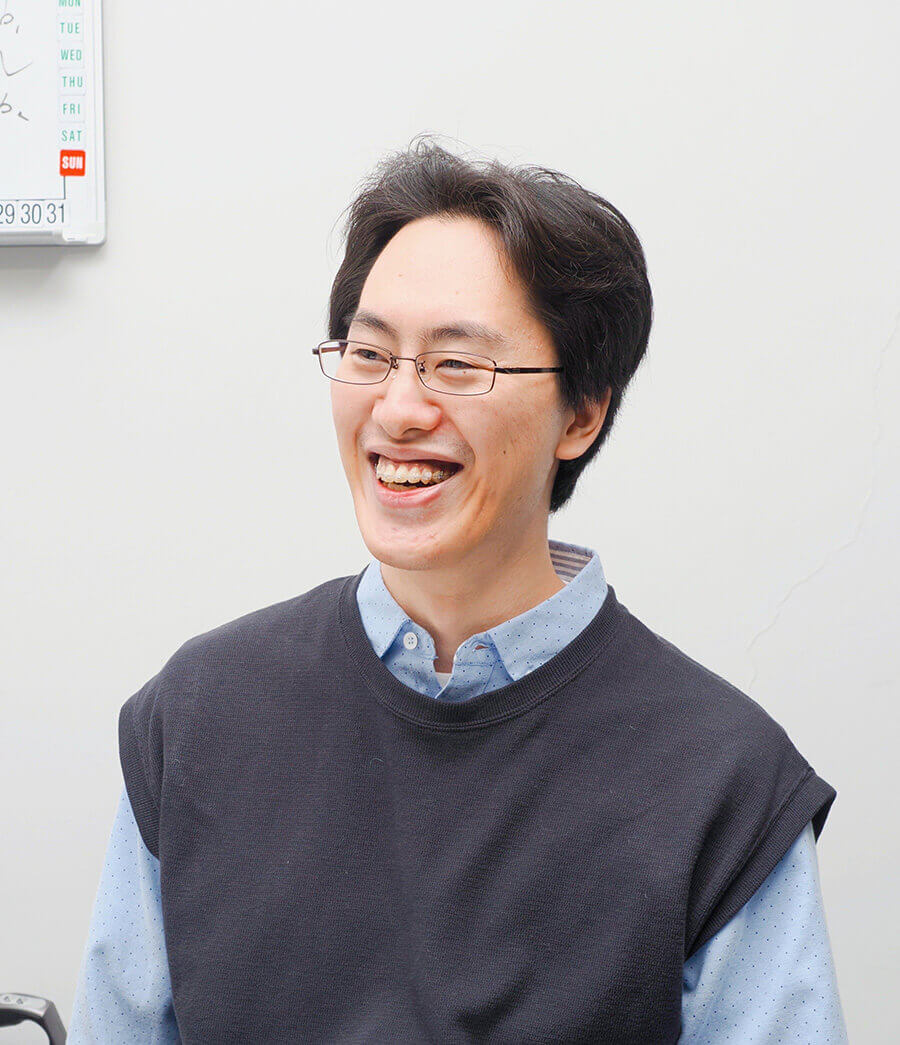 Dr. Endo (Researcher, National Institute of Advanced Industrial Science
and Technology (AIST))
Dr. Endo (Researcher, National Institute of Advanced Industrial Science
and Technology (AIST))
Dr. Endo
I was primarily responsible for implementing the program. I found that using Fixstars Amplify was simple
to use, even
with just a basic knowledge of quantum annealing and some programming experience. One of the features I
found
particularly helpful was the automatic conversion of polynomials to QUBO, it made the whole process much
more
user-friendly.
Prof. Muramatsu
Based on my observation, Mr. Endo had a high level of programming skills and a good balance of creativity
and ability to implement ideas, which made it easy for him to use Fixstars Amplify. Additionally, two
students who recently began research using Amplify, while they had basic knowledge of Python, were able to
effectively use the software with guidance and training from more experienced peers.
The
tutorials and documentation available on the Amplify website were also very well-prepared and
helpful.
What were some difficulties or successes you experienced during this research?
Prof. Muramatsu
I struggled with formulating the phase-field model in QUBO format. However, the calculation time was
greatly reduced to around 10 seconds, which allowed me to quickly go through the implementation and
verification cycle, and also enabled me to analyze various cases at once. I felt that this resulted in a
significant achievement.
Dr. Endo
As the Professor mentioned, I struggled with formulating the phase-field model into a QUBO format. To begin
with, as far as I know, there were no precedents for using annealing for simulating physical phenomena, and it
was an idea that started from nowhere. But when I was actually able to get the results that I imagined through
the simulation, I was very happy. If this is possible, I feel that there is a great potential to use it in
other types of physical simulations and to be able to simulate anything by writing the energy in a QUBO
format.
What are your future plans for research and the use of Fixstars Amplify?
Prof. Muramatsu
In our research lab, we are not only utilizing Fixstars Amplify for simulating phase-field models, but
also for analyzing the optimization of truss structures. We aim to solve larger problems
faster and are currently using a paid plan. We are starting to see interesting results and are excited to
see what the future holds.
In addition, we recently began collaborating with a group from RWTH Aachen University of Applied Sciences
in Germany and a PhD student from Keio University in Japan on research related to fluid analysis. Although
my expertise is in materials and solids, rather than fluids, I am using the insights gained from
simulating with the Ising machine to explore the possibility of developing new analysis methods in the
field of fluids.
I believe there is a lack of knowledge in the design of QUBO when it comes to mastering the use of Ising
machines, including the representation of real numbers.
In our research lab, we plan to continue conducting research utilizing the Ising machine in various fields
and publishing papers to share our findings on how to design QUBOs to effectively utilize the Ising
machine and the benefits that can be achieved in these fields.
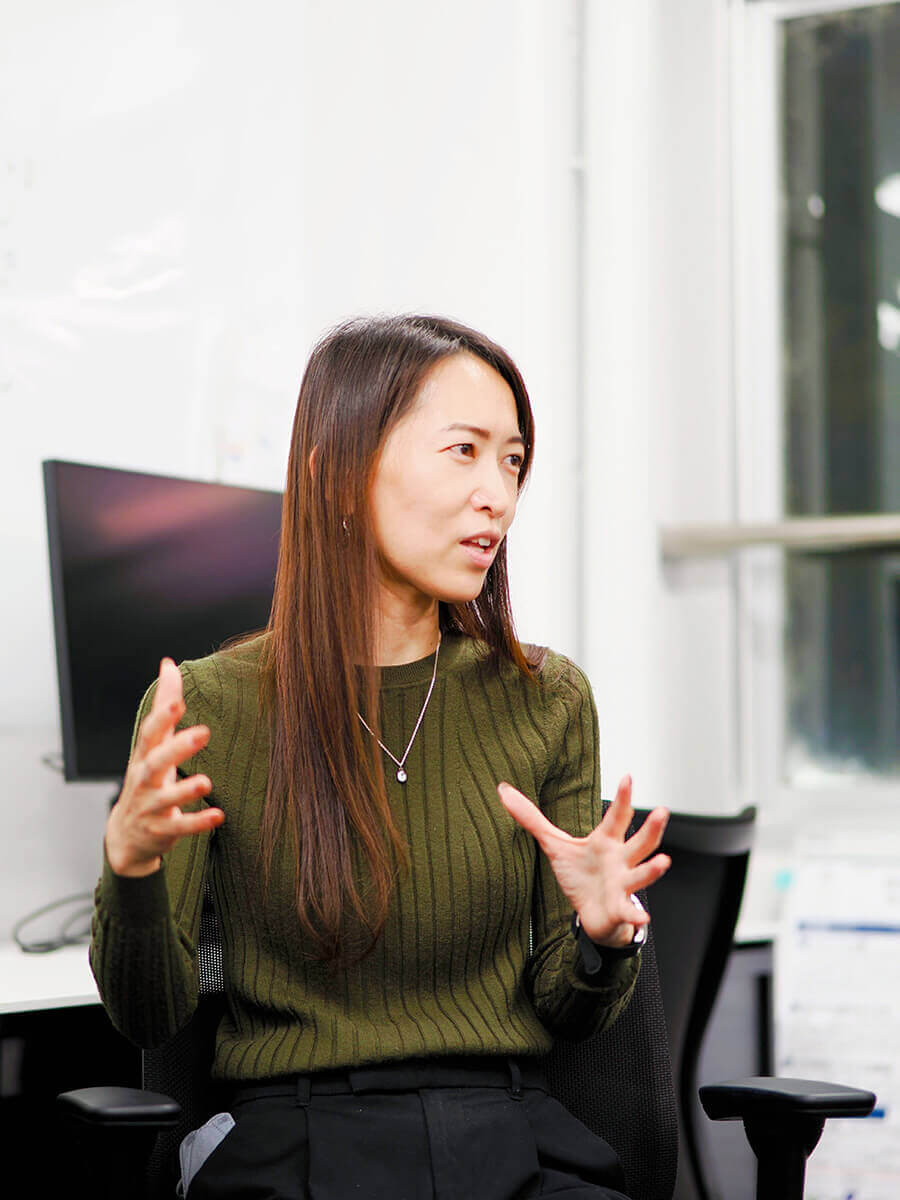
What are your future expectations for Fixstars Amplify?
Prof. Muramatsu
In the field of material simulation, there is a significant interest not only in the final equilibrium state
but also in the process leading to it (non-equilibrium state). Therefore, we are exploring the possibility of
obtaining information that cannot be represented by linking the calculation process using the Ising machine
(the trend of the decrease in the objective function) with the non-equilibrium state. We are also engaging in
discussions with the people from Fixstars Amplify about this.
In addition, as it relates to the use of Fixstars Amplify and annealing in general, it is crucial to
establish how to handle probabilistic results when incorporating probabilistic annealing into deterministic
numerical simulations.
A message to researchers
Prof. Muramatsu
I frequently communicate with various researchers, and I sense that many of them are intrigued by the
principle of the Ising machine, which is utilized to search for the ground state of energy without the
concepts of time evolution or boundary conditions that are commonly present in general simulations.
Through this research, I realized that if we have the capability to think about how to design QUBO, there is a
potential to apply Ising machines to a wide range of applications, including simulating physical phenomena. I
hope to accumulate research results utilizing Ising machines in various fields.
* All information in this article is based on the information available at the time of the
interview (November 2022).
After the interview
I was greatly inspired by Prof. Muramatsu and everyone in her lab who developed a new method of using
the Ising machine to simulate physical phenomena and consistently achieved results. As Prof. Muramatsu
mentioned in the interview, I believe that the analytical method presented this time has the potential
to be applied in various fields, such as materials research in metals. Our team will continue to work
together to make the Fixstars Amplify useful for research.
Interviewer: Takahisa Todoroki (Senior Director, Partner Success Department, Fixstars Amplify
Corporation)